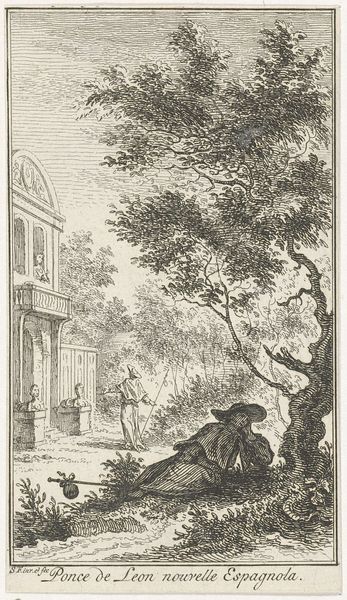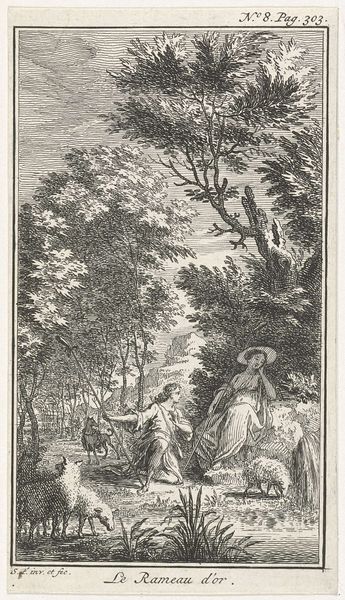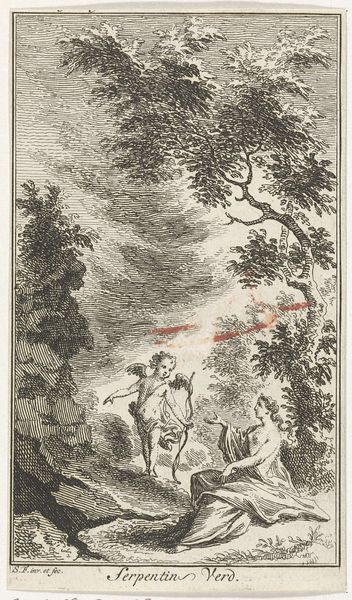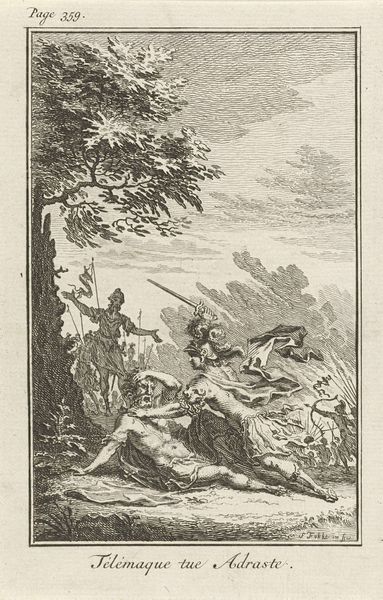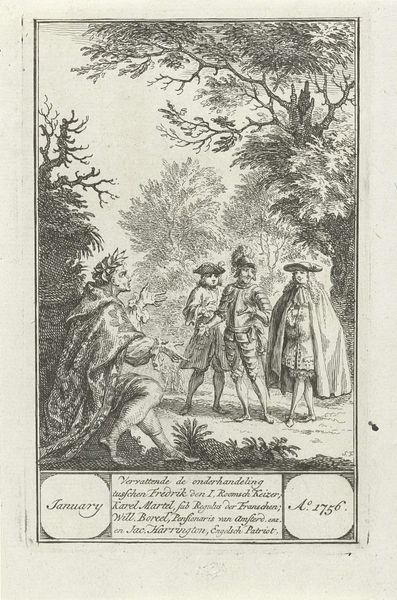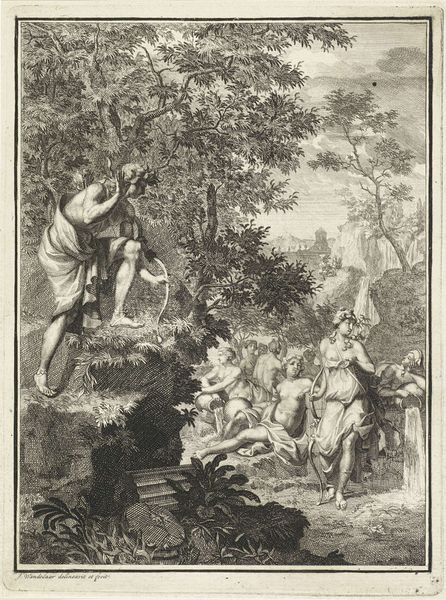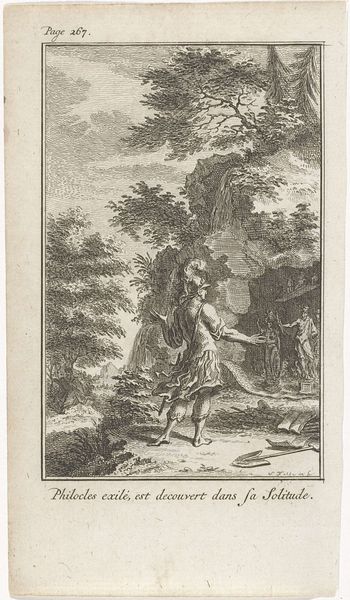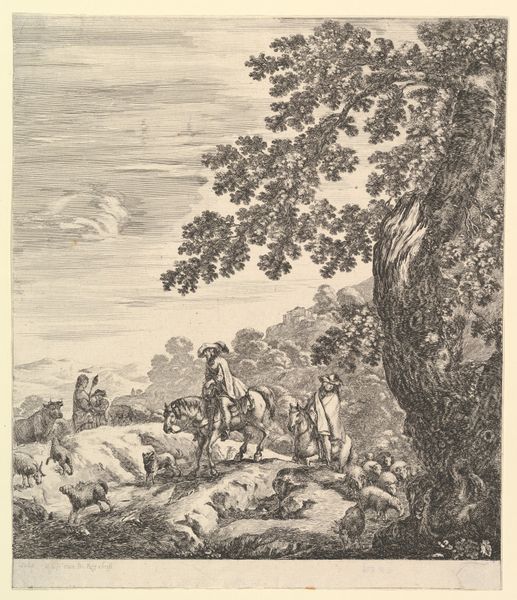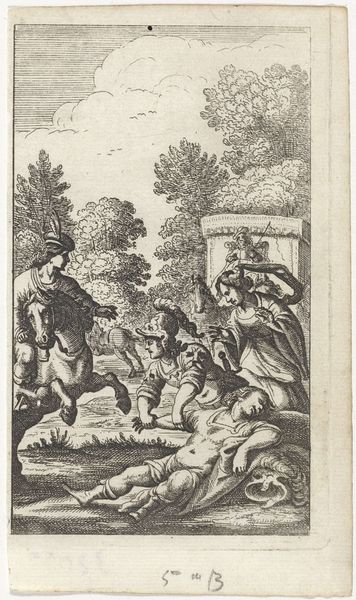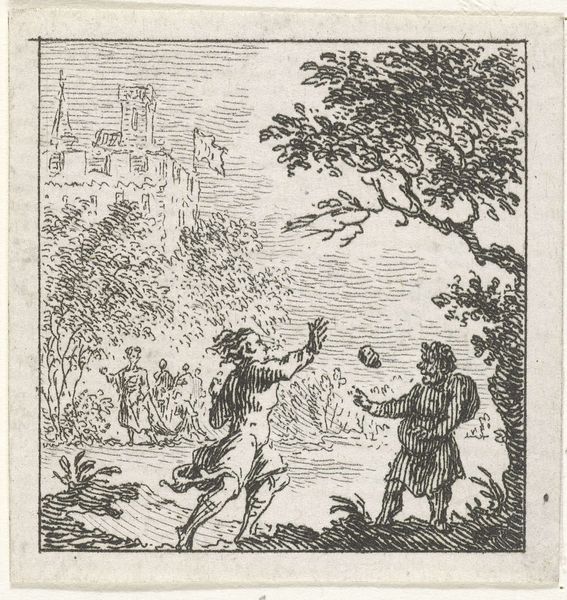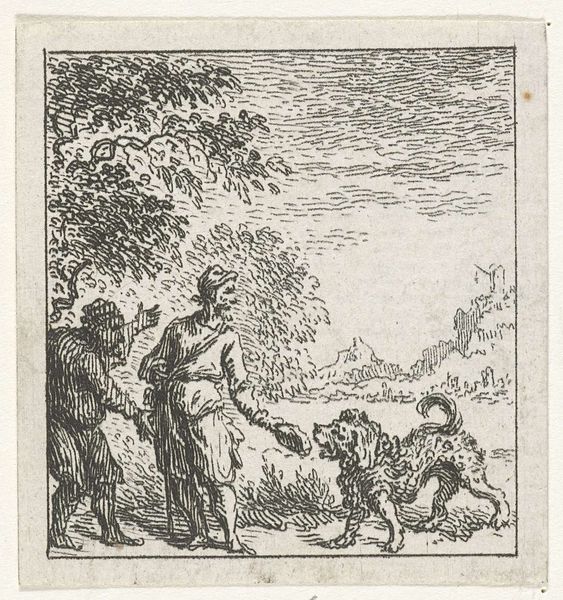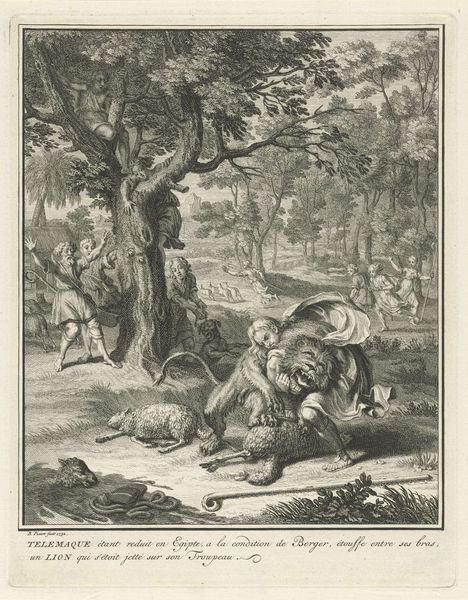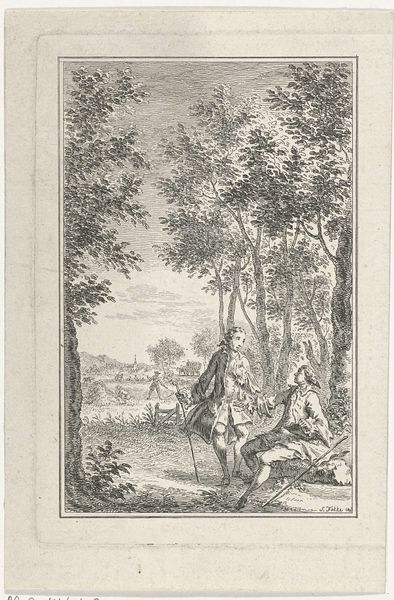
drawing, print, pen, engraving
#
drawing
#
pen drawing
# print
#
landscape
#
figuration
#
line
#
pen
#
genre-painting
#
engraving
Dimensions: height 115 mm, width 66 mm
Copyright: Rijks Museum: Open Domain
Curator: What strikes me immediately about this piece is its pervasive air of anxiety, a disquieting calm before an implied storm. Editor: We're looking at "Overvallen man gevonden door ruiters," or "Man Attacked, Found by Riders." The Rijksmuseum holds this engraving by Simon Fokke. Although the exact date is not known, we can place its creation sometime between 1722 and 1784. What do you make of its material impact? Curator: The dynamism inherent in the stark lines captures the scene, although limited by its materiality. I would even argue that this monochromatic constraint intensifies the latent narrative tension. The use of line to describe shadow and texture provides a sophisticated compositional structure. Editor: And look at that intricate linework, created from pen and engraving. Think of the craftsman's meticulous labor to carve this dense forest scene—the trees are looming, almost enclosing the central figures. This level of detail suggests a market that appreciated finely wrought prints for collecting and study. Curator: Yes, but the medium is less important than the arrangement of forms, the dynamic interplay of light and shadow defining the emotional tenor of the landscape. Observe how Fokke frames the scene, creating pockets of dark and light that draw our gaze toward the central figures and their dramatic confrontation. Editor: Though I agree the framing directs us to the drama unfolding, it's the density of labor, of repetitive etching, that impresses me. How many hours did it take Fokke to communicate this small social drama using such restricted means? We're seeing the final consumable product of someone's skilled work. What might its market value suggest about attitudes towards labor, crime, or assistance during that time? Curator: We must be careful of focusing on extraneous elements such as labor. Notice how the lines of the landscape draw your eye directly to the confrontation. The composition, like the materials, has little impact unless it forwards the central aesthetic aim: the interplay of dark and light. Editor: But considering the engraver's skill gives the piece more dimensionality. This artwork becomes less about idealised forms and more about the sweat and effort required to translate an experience into a repeatable, distributable image. Ultimately, someone decided this was an image worth circulating. Curator: In essence, we see reflected here the quintessential play of binary opposition, order against disorder, civilization versus nature. Editor: Well, I appreciate that someone recorded the hard labor involved in witnessing, assisting, and even depicting an unfortunate event.
Comments
No comments
Be the first to comment and join the conversation on the ultimate creative platform.
